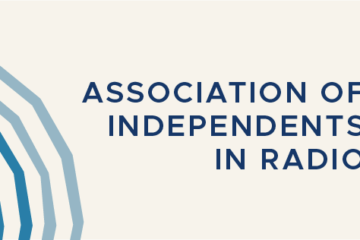PBS to develop proposal for public affairs channel
Backed by a $200,000 Knight Foundation grant, PBS will develop a proposal for a public affairs channel — working title, Public Square — that public TV stations could air on DTV multicast channels, the network announced Jan. 8 [2004].
The channel would offer “sustained electronic journalism” that contrasts with other networks where “sleaze repeatedly trumps substance,” said Hodding Carter, president of the John S. and James L. Knight Foundation, in a news release.
“You might say what CNN’s potential seemed to be at the height of its potential is where we’re going,” Carter told Current.
Repeats of PBS public affairs shows on the new channel could bulk up the programs’ audiences, cable-style, but Public Square would also need exclusive programming, said PBS co-chief program executive Coby Atlas.
“We plan over the next five months to identify what the voice of the new channel will be and . . . come up with one or two distinctive shows unique to this channel,” Atlas said in an interview.
Despite its many hours of news and talk, TV journalism still lacks decent coverage of government, investigative reporting and coverage of journalism itself, says Eric Newton, director of journalism initiatives at Knight.
A project manager and an advisory panel, both yet to be appointed, will deliver a report to the foundation June 30 after considering audience needs and options for programs, revenues, costs and distribution of the channel.
Public Square gets its name from the network’s 2001 initiative headed by Frontline veteran Michael Sullivan to develop a two-hour Friday-night public affairs block. PBS lacked money to pursue that plan, which faltered after 9/11 when the network rushed Now with Bill Moyers onto the air.
A scarce and fundable genre
PBS President Pat Mitchell returned to the idea in a speech at the network’s Annual Meeting in June. She was interested in developing a public affairs channel for viewers turned off by other channels’ “screaming debates, negative campaigns or reports of scandals,” she said.
Other top options for multicasting were channels for the arts and for children’s programs serving specific age groups, she said in June. However, those ideas have been shelved while PBS puts its development effort into the public affairs channel and a broader PBS Kids cable channel that was previously announced, according to Atlas. “It doesn’t make sense to spread ourselves too thin,” she says.
Public affairs programming may not draw the largest audiences of PBS’s genres, but it has disproportionate potential for foundation funding. Like arts and children’s programming of PBS quality, it’s in scarce supply on TV and closely linked with the objectives of many philanthropists. Journalism attracted NPR’s big gifts from Joan Kroc and the MacArthur Foundation last year. And mega-donors have proved their interest by pledging millions toward ambitious public TV projects, including two notable false starts — the Markle Foundation’s plan to aid election coverage, which failed to win system support in 1992, and the Freedom Forum’s backing of a WETA public-affairs cable channel in 1999, which couldn’t get cable carriage.
The Knight Foundation, like the Freedom Forum (formerly the Gannett Foundation), draws its wealth and journalistic interests from newspapers.
“Many of our board members are unhappy about the overall nature of public affairs programming in the electronic media,” said Carter, who grew up in a newspaper family, worked in newspapers and later anchored the PBS media criticism program Inside Story. He reported numerous Frontline programs, often working with Sullivan.
After PBS submits its proposal it could win further aid from Knight. The foundation knows that making the channel self-supporting “can take more time than flicking your finger,” Carter said.
“The amount of money Pat needs [for the channel] is so great that no one foundation or funding source is going to be adequate,” says Newton. “That’s why it’s important to help her make a comprehensive plan.”





